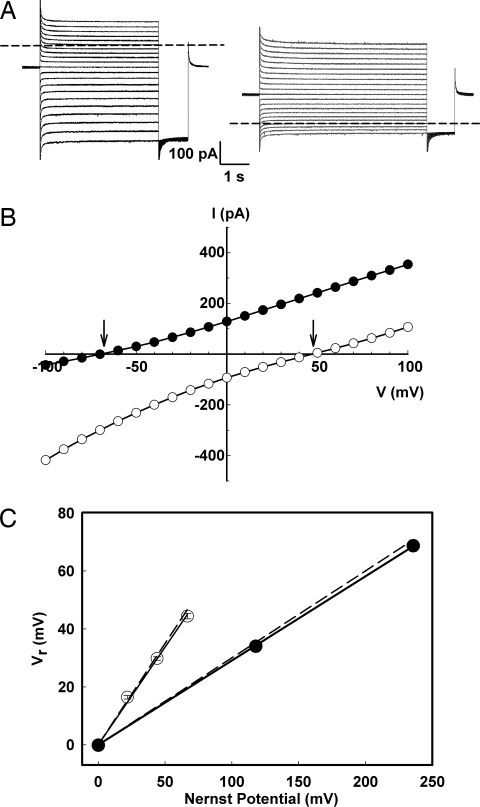Fig. 1.
Cl−/H+ coupling in the Cys-less transporter. Cys-less CLC-ec1 was inserted into planar lipid bilayers, and the resulting currents were recorded under voltage-clamp conditions. (A) Representative families of currents, with voltages from −100 to 100 mV in 10-mV steps, with either Cl− (300 mM/17 mM) (Left) or pH gradient (3.0/7.0) (Right) across the bilayer. Dashed lines mark zero-current level. (B) Current–voltage curves measured 200 ms before the end of the pulse interval for the gradient of Cl− (open points) or H+ (filled points). Reversal potentials are marked by arrows. (C) Variation of reversal potential, Vr, with Cl− or pH gradients. For Cl− gradients at symmetrical pH 3.0 (filled points), one side of the membrane was held at 300 mM KCl while KCl was varied on the opposite side. For pH gradients at symmetrical 300 mM KCl (open points), one side of the membrane was held at pH 3.0 while the opposite-side pH was varied. Gradients are reported as Nernst equilibrium potentials of each ion. Dashed lines represent the previously published measurements for wild-type protein (1).

